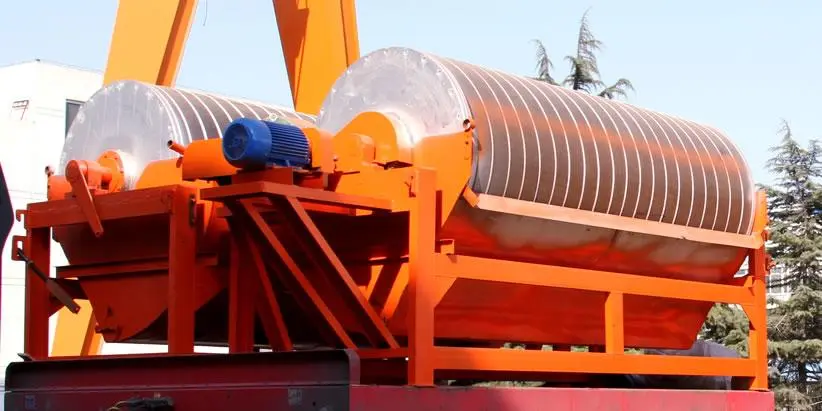Magnets are one of those elements that we come across in the daily course of our lives. Needless to mention, they play a very important role in our lives. Because of their magnetic qualities, magnets are put to various uses in different industries. For instance, magnets are used in a variety of devices that we use every day such as computers, MRI machines, toys, credit cards, etc. Depending on their magnetic qualities and composition there are three main types of magnets which include Permanent magnets, Temporary Magnets, and Electromagnets.
While some of the magnets are visible in the devices that they are used, others are fitted inside the inner workings of the devices. Thus, it can be said that even if you can’t see the magnets they are silently doing their work unseen.
Importance Of Magnets In Our Daily Lives
As already mentioned above, magnets are used for a number of purposes some of which we are going to discuss now.
Appliances
Speakers and headphones – magnets convert electrical signals into sound.
Microphones – work in reverse, turning sound into electrical signals.
Refrigerators – magnetic strips in doors keep them sealed tightly.
Fans, washing machines, and blenders – motors rely on magnetism to spin.
Computers and Electronics
Most computers have magnets tucked inside the inner workings which help the computer store data on its hard drives. The magnets present inside the device help alter the direction of the magnetic material on the hard disk in different segments that represent computer data. The computer read the direction of each segment of the magnetic material in order to read the data. Apart from this magnets are also found inside small speakers, USB cable, radios, and televisions all of which form a daily part of our lives.
Electric Power and Other Industries
In the industrial sector, magnets are considered to be one of the most important elements that they use. Magnets that are used in electric generators to convert the mechanical energy into electricity and vice versa. When it comes to the recycling part, electromagnets are used to grab large pieces of metal (not a real big magnet) that weigh more than thousands of kilos. Other than that magnets are also used in the mines (magnetic drum) with the help of which metallic ores are separated from crushed rock. Magnets are also used in the food processing units where it is used to remove small pieces of metals from grains other food items. Thus, you can see how useful magnets are for the industrial sector as well as for us.
Health and Medicine
Magnets are also used in the field of medicines. Equipment such as MRI machines make use of a magnet in order to function. Apart from the medical equipment magnets are also used for treating cancer. A magnetically sensitive fluid is injected into the patient’s body after which a powerful magnet is used to produce heat in the body. The generating heat helps kill the cancer cells without harming any of the organs in the body.
Healthcare
MRI machines – use very strong magnets to create images of the body.
Hearing aids – some use magnets in speakers and batteries.
Magnetic therapy products – marketed for pain relief (though effectiveness is debated).
At Home
You may not know or notice but most of the devices that we use at our home have magnets in them which serve some purpose or the other. For example, refrigerators, vacuum cleaners, credit cards, phones, doorbells, etc. have magnets in them.
From the above discussion, it is clear that magnets form an integral part of the devices that we use in our daily lives and thus, magnets are important for us humans.
Transportation Vehicles
🚄 Maglev Train
Maglev trains operate based on the principle of electromagnetic levitation. Powerful electromagnets lift the train above the track, completely eliminating the friction between traditional wheels and tracks. This technology not only significantly reduces energy loss but also enables trains to achieve higher operating speeds. The Maglev train currently in operation in Shanghai, China, and the high-speed Maglev projects under development, represent the cutting edge of high-speed transportation technology worldwide.
🚗 Automobiles
In the automotive industry, magnets play a central role. The drive motors of electric vehicles typically use rare-earth permanent magnets (such as neodymium magnet) interacting with coils to generate strong electromagnetic torque, thereby propelling the vehicle. Additionally, some mechanical speedometers utilize magnetic induction principles for speed measurement: as the wheels rotate, the magnetic field changes and drives the pointer to deflect, accurately displaying the speed. Furthermore, modern automobiles’ ABS braking systems are equipped with magnetic induction-based sensors to monitor wheel speed in real-time, effectively preventing wheel lockup during emergency braking and significantly enhancing driving safety.
🚴 Bicycles and Motorcycles
Magnets are also widely used in bicycles and motorcycles. Some bicycles’ odometers and speedometers use small magnets on the wheels to record the number of rotations, thereby accurately calculating riding speed and distance traveled. The motors of motorcycles and electric bicycles also rely on the interaction between magnetic fields and electric currents to generate power, with the same working principle as electric vehicle motors. This magnetic drive technology not only improves the efficiency of power output but also promotes the development of green transportation methods.
🛡️ Security Screening Equipment
Metal detectors are widely used in public places such as airports and stations. They work based on electromagnetic induction. When a metal object is detected in the detection area, the original magnetic field is disrupted, and the device immediately sounds an alarm, enabling rapid screening. While X-ray security scanners commonly used in luggage checks primarily rely on X-ray imaging technology, their internal conveyor belt systems also depend on electric motors for operation, and the core components of these motors are magnets.
🛍️ Anti-theft Systems
In retail and shopping malls, anti-theft technology also heavily relies on magnetic principles. Hard tags commonly found on merchandise contain magnetic materials. When customers check out, cashiers use a specialized “demagnetizer” or strong magnet to deactivate them. If an item that has not been demagnetized passes through the anti-theft gate at the supermarket entrance, the magnetic field or radio frequency system will immediately detect it and trigger an alarm. Such applications effectively reduce the risk of merchandise theft.
🔒 Magnetic Locks and Access Control Systems
In modern buildings, electromagnetic door locks are widely used in office spaces and secure areas. They operate by activating an electromagnet with an electric current to control door opening and closing, enabling efficient access management. Additionally, common access control cards are typically magnetic stripe cards, with the black magnetic stripe on the back storing identity verification and access permission information, ensuring the security of access control.
Conclusion
The applications of magnets in everyday life are far more widespread than most people realize. From magnetic notes that stick to refrigerators, to magnetic components that transmit sound in speakers, to magnetic materials that store important data on hard drives, magnets are virtually everywhere. They play a crucial role in household appliances, electronic devices, industrial machinery, medical equipment, and even emerging robotics technology. It is precisely this diversity and practicality that makes magnets an indispensable cornerstone of modern life, with their potential applications continuing to expand.
What to know more? Visit the post: magnet function in home.

I’m Ben, with over 10 years in the permanent magnet industry. Since 2019, I’ve been with Osenc, specializing in custom NdFeB magnet shapes, magnetic accessories, and assemblies. Leveraging deep magnetic expertise and trusted factory resources, we offer one-stop solutions—from material selection and design to testing and production—streamlining communication, accelerating development, and ensuring quality while reducing costs through flexible resource integration.








